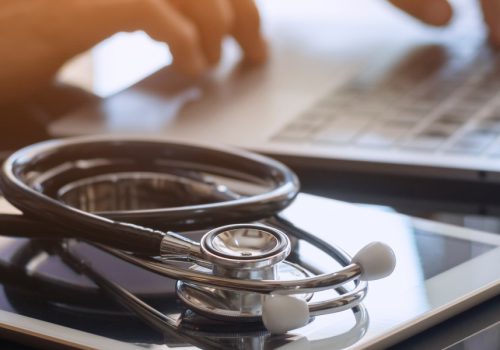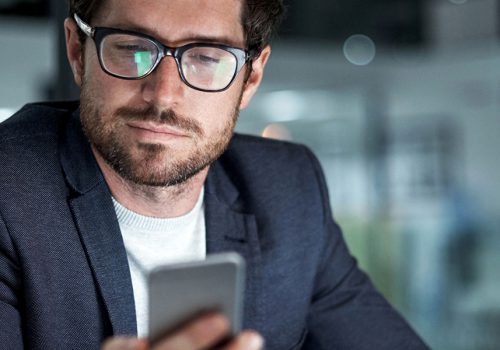Five innovations that will change the way you travel.
Remember the days when large paper maps filled the car and holidays were booked by a travel agent? Neither do most people. Technology had already revolutionized the world of travel before COVID-19, and the trend has been catapulted as many more things move to digital. From virtual-reality tours to drone photography, new technology is continuing to reshape the way we experience travel and tourism.
Today’s businesses in the travel, tourism, and hospitality industry are using technology to enhance the customer experience and ensure traveler safety. ISO standards underpin much of the technology-driven shifts. As these innovations have come on the scene, the customer experience at every stage of their journey has also evolved, including safety first. Here are our top five innovations that will change the way you travel.
Healthy Travel
As countries start reopening their borders to tourists, they are looking at ways to harmonize tools to manage the COVID-19 pandemic in a more integrated manner. One of these involves apps that are recognized and trusted across and within regions.
An example is COVID-19 tracing apps. ISO/TS 82304-2, Health software – Part 2: Health and wellness apps – Quality and reliability, is a technical specification that brings together guidelines and requirements devised by many local and national health organizations around the world to ensure apps are safe, reliable, and effective.
Recommended by the European Union in their European toolkit for COVID-19 tracing apps to “filter out qualitative and trustworthy health apps”, the guidance provides an internationally agreed set of specifications for assessing mobile apps using a scoring methodology that gives a “traffic light” themed label. The label then enables apps to be easily compared by users and health professionals.
Great Traveling Experience
Long gone are the days when we accumulated stamps in our passports (sigh) and their processing took almost as long as the flight. Machine-readable passports not only mean faster processing, but more accurate matching against immigration databases and watchlists. To ensure they meet international regulatory requirements, they are standardized against the International Civil Aviation Organization (ICAO) Document 9303.
ISO/IEC 18745-1, Test methods for machine-readable travel documents (MRTD) and associated devices – Part 1: Physical test methods for passport books (durability), is an official companion to the ICAO document, defining what is necessary for passports to be compliant. Developed in collaboration with the International Electrotechnical Commission (IEC), the standard is essential to meet legal requirements and details how to undertake effective testing so that machine-readable passports will endure the stresses of use and stand the test of time.
Staying Safe
Biometrics is a highly effective tool for verifying identification at any kind of border crossing, and particularly at airports. Recognition technology is being applied in some hotels already, with retina scanning and fingerprint scanning being used to unlock hotel rooms. And because it’s so good, it is more and more widespread, which means ensuring its security is essential.
Threats to biometric systems can come in the form of presentation attacks, where an attempt to subvert the system security policy is made by presenting natural biometric characteristics or artefacts holding copied or faked characteristics.
The series of standards ISO/IEC 19989, Information security – Criteria and methodology for security evaluation of biometric systems, helps ensure they are protected from such attacks. It provides a bridge between ISO/IEC 19792, which defines the evaluation principles for biometric products and systems, and the ISO/IEC 15408 series and ISO/IEC 18045, which define the criteria and methodology requirements for security evaluation. ISO/IEC 19989 includes various parts covering a general framework for the security evaluation of biometric systems as well as requirements and recommendations related to biometric recognition performance and presentation attack detection.
ISO standards underpin much of the technology-driven shifts.
Easy Booking
Ever booked a flight with one airline to find yourself on a different company’s aircraft? Or had an itinerary involving different carriers, but they all appeared together no matter which of the airlines you were flying with? This is due to effective data transfer and interchange, also known as Single Window capability.
Single Window capability is used a lot in international trade situations to unify border clearance requirements. It is also used for travelers. What enables this technology to work so seamlessly anywhere in the world is various other technologies that allow data to be used on different platforms through a common international language. These are defined in the series of standards ISO/IEC 19505, Information technology – Object Management Group Unified Modeling Language (OMG UML), and ISO/IEC 19503, Information technology – XML Metadata Interchange (XMI).
Online Consumer Reviews
Choosing a hotel or tourist experience can sometimes feel like pot luck, which is why online consumer reviews play an increasingly strong role in holiday booking decisions. Yet how can we be sure the reviews are legitimate and not influenced by the service provider itself?
Aimed at review Websites as well as travel organizations themselves, ISO 20488, Online consumer reviews – Principles and requirements for their collection, moderation, and publication, details the requirements for effectively managing consumer review sites and featuring only recommendations that will help increase consumer trust and protect suppliers from exploitation.
Reflecting international best practice throughout the process, from collection and moderation to publication, it helps companies boost consumer confidence in online reviews, protect suppliers from mischief and improve the quality of products and services provided.









